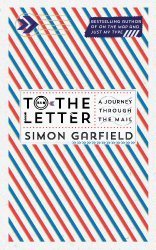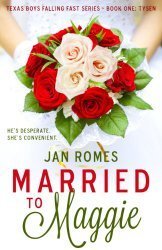Hannah Fielding's Blog, page 100
June 27, 2014
To the Letter
Dear Margaret, We regret to inform you that your husband is missing in action…
Dear Mother, Finally, I can write the words: Born this morning, a beautiful baby girl…
Dear John, I’m sorry but I just can’t do this anymore…
Dear Grannie, Did I leave my spectacles at your house?
Dear Roger, Little Alice’s rabbit died, and she wants to know what rabbit heaven looks like…
Dear Annabelle, dear, dear, dear, Annabelle…
The letter. Bearer of news, recorder of moments, preserver of memories, safekeeper of emotion for thousands of years. Empires were built and destroyed on letters; relationships fostered and fractured; the greatest creative works inspired; the greatest inventions documented.
And yet, how often do you take pen to paper these days? How many sheaves of writing paper lie waiting in your drawer? Is your fountain pen flowing with fresh ink, or languishing long forgotten in the same dusty corner? Is your address book full of promise? Are postage stamps ever present in your purse? Is the path to the post box a well-trodden one?
‘No,’ many of us would admit. ‘But I do send a lot of emails…’
And therein lies the sad truth: the letter is part of ‘a vanishing world’. Enter Simon Garfield’swonderful book To the Letter.
From the blurb:
To the Letter tells the story of our remarkable journey through the mail. From Roman wood chips discovered near Hadrian’s Wall to the wonders and terrors of email, Simon Garfield explores how we have written to each other over the centuries and what our letters reveal about our lives.
Along the way he delves into the great correspondences of our time, from Cicero and Petrarch to Jane Austen and Ted Hughes (and John Keats, Virginia Woolf, Jack Kerouac, Anaïs Nin and Charles Schulz), and traces the very particular advice offered by bestselling letter-writing manuals. He uncovers a host of engaging stories, including the tricky history of the opening greeting, the ideal ingredients for invisible ink, and the sad saga of the dead letter office. As the book unfolds, so does the story of a moving wartime correspondence that shows how letters can change the course of life.
To the Letter is a wonderful celebration of letters in every form, and a passionate rallying cry to keep writing.
As the author explains on his website:
To the Letter is both a celebration and a lament, and hopefully an inspiration. But it also asks some proper questions, not least, ‘How will we be able to tell our history without letters?’ I make it clear in the book that I don’t think the answer lies with emails.
The history of letters and letter writing, with all its quirks, makes for fascinating reading, but for me the real magic of the book lies in its pulling together letters spanning two millennia of history. Two millennia! After so long, are we the generation who is killing the letter in our ever-expanding quest to be paper-free?
The author shared with the BBC his view on the future of letter writing:
What do you think? Is letter writing dying a death? Are emails a suitable substitute? Should we write – and keep – more letters? I would love to hear your thoughts.
June 25, 2014
Favourite film: A Room with a View
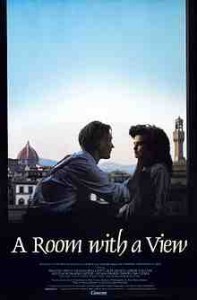 When I’m writing a novel, I like to immerse myself so far as is possible in the culture and time in which the story is set. For my most recently published novel, The Echoes of Love, that meant enjoying Italian culture – watching films, reading books and listening to music – but also broadening out to popular culture of the era (the turn of the millennium) and to non-Italian works that are inspired by the Italian setting.
When I’m writing a novel, I like to immerse myself so far as is possible in the culture and time in which the story is set. For my most recently published novel, The Echoes of Love, that meant enjoying Italian culture – watching films, reading books and listening to music – but also broadening out to popular culture of the era (the turn of the millennium) and to non-Italian works that are inspired by the Italian setting.
One of the films I most enjoyed re-watching after many years was the Merchant-Ivory adaptation of EM Forster’sA Room with a View. Have you seen the film? If, like me, you’re a romantic, and you like period dramas, then it’s beautiful – but it’s worth watching for the Italian setting alone.
The story, set in the Edwardian era, follows the developing love between two young people: Lucy Honeychurch (what a name!) and George Emerson. Lucy is limping along in a restrictive upper-class world still rife with Victorian ideals; George represents forward-thinking ideals and is deeply attractive for his free spirit. A kiss – such a kiss – ensues, but how can Lucy cast off the system of rigidity in which she dwells and accept George’s advances? It is more fitting, surely, to marry straight-laced, wealthy, respectable Cecil. Fitting, but was there ever a man more lacking in passion? Does passion matter? What is love, and does Lucy have the right to claim it? These questions, and more, lie at the heart of this evocative love story. I won’t spoil the ending, but suffice it to say that Lucy finds that room with a view that she needs – and don’t we all need one!
The film won widespread critical acclaim, and multiple awards, including Academy Awards, Golden Globes and BAFTAs.I think what I love most about the film is how it encapsulates the stirring beauty of the Italian landscape; how the romanticism of Italy can affect a foreigner to the land. This is a theme I explore in my own novel, The Echoes of Love, whose characters are also English and find love in Italy – in Tuscany, ultimately: location for Forster’s love story. Take a look at this clip and you’ll see how the setting – the breathtaking countryside; the moving Puccini aria – creates romance, demands romance.
As George says: ‘[t]here is something in the Italian landscape which inclines even the most stolid to romance’. And I would argue that there is something in this film, this particular adaptation of the Forster classic, that could incline even the most stolid to romance too.
June 23, 2014
Writing Italy: Treading the line between reality and cliché
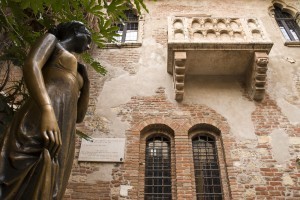 In this season’s issue of The Author, Tobia Jones shares an interesting article entitled ‘Italy: Real and Imagined’, in which he explains that ‘[a]nyone who writes about Italy has a battle on their hands to avoid “italianity”, the cult of Italian myths and clichés’. He goes on to explore in particular the representation of Italy as a bloodthirsty nation, but he also touches on another aspect that struck a chord with me, that of the Italian as ‘passionate’.
In this season’s issue of The Author, Tobia Jones shares an interesting article entitled ‘Italy: Real and Imagined’, in which he explains that ‘[a]nyone who writes about Italy has a battle on their hands to avoid “italianity”, the cult of Italian myths and clichés’. He goes on to explore in particular the representation of Italy as a bloodthirsty nation, but he also touches on another aspect that struck a chord with me, that of the Italian as ‘passionate’.
Italians are passionate. Astatement: a generalisation, a stereotype, a cliché. Those words –generalisation, stereotype, cliché – are rich with negative connotation. Writers must avoid these traps. We must. Mustn’t we?
I wonder. How can a romance writer create a romantic fictional world without being allowed to say, ‘Here’s a passionate place’; ‘Here’s a romantic people’?
I set my novel The Echoes of Love in Italy (Venice, Tuscany and Sardinia), because the setting and its people areunequivocally passionate. I know this because I explored the country; and of course I know this because Italy and Italians are popularly recognised as so. Now, I don’t mean to suggest that every Italian is passionate, but how can one deny the thread of passion running through the Italian culture? This is, after all, the country of Romeo and Juliet!
I could have set The Echoes of Lovein another country, a country that doesn’t shout ‘passion’ to me or to others. Perhaps someday I will situate a love story in a place that seems the very antithesis of a romantic setting (though I doubt it, because I so love to write of beautiful, exciting, inspirational places). But I make no apology for harnessing the inspiring background of Italy in my novel: the gondolas, the architecture, the music, the food, the countryside, the moonlight. These are the aspects of my book that reviewers frequently remark upon, enjoying the sense of having travelled to Italy through reading the novel, being swept away by romance due to the setting.
Neither of my protagonists in The Echoes of Love is Italian; both are British ex-pats who have chosen Italy as their home. That detail was important to me: the passion of Italy has infused Paolo and Venetia, changed them; they are made passionate by the country and its people.
Passion in Italy. Reality or cliché?
Reality, I cry! Reality. What kind of romantic would I be if I didn’t believe ardently that the passion of Italy is real? And if it is real, then surely concerns of cliché and stereotype fall away. ‘Write the truth based on your heart and your experiences’ is a basic principle of ‘good writing’, and it is one to which I hold firm.
What do you think? Do you seek out writing that is always pushing against any form of generalisation? Do you cliché-spot as you read? Or do you find a distinction between the cringeworthy cliché (Pierre the Frenchman is wandering about in a black-and-white-striped shirt with a string of garlic around his neck) and that which rings of truth (a man and a woman fall in love as they take in all thepassionof their Italian surroundings)? I would love to hear your thoughts.
June 22, 2014
Bookspotting: an app for the future
 Visitors and residents of Scotland are to be envied by book lovers worldwide: a creative collaboration there has come up with a fantastic application for smartphones and tablets that marries, on the one hand, authors and books with, on the other, locations and themes. So, wherever you are in the country, you can call up, via GPS, places of literary interest near to you.
Visitors and residents of Scotland are to be envied by book lovers worldwide: a creative collaboration there has come up with a fantastic application for smartphones and tablets that marries, on the one hand, authors and books with, on the other, locations and themes. So, wherever you are in the country, you can call up, via GPS, places of literary interest near to you.
The app is based on information from 3,500 books – fiction, non-fiction and children’s – whose details pertain to Scottish locations, collating by character, place, setting, author, date and theme.It also provides details of the closest independent bookshop, some quizzes and writing-related walking tours. The aim of the app, rolled out by Publishing Scotland, is:
… to get people discovering and reading great Scottish books. The developers also hope to promote wider access to literature, find new audiences for Scottish writers, celebrate Scotland’s unique literary heritage, update the image of Scotland’s vibrant publishing industry and support cultural tourism around all regions.
Bookspotting is available as a free download on the Apple iTunes and Google Play stores.
Such a fantastic idea, don’t you think? No doubt you can anticipate the question at the forefront of my mind: Why doesn’t every country have this?
Physical connections to literature are so deeply affecting. I first came to realise this when, as a young woman, I visited Poets’ Corner at Westminster Abbey. To stand on one spot and be surrounded by so many great names: Chaucer, Spenser, Byron, Shakespeare, the Brownings, Dickens, Hardy, Kipling, Tennyson, Auden, Austen, Blake, the Brontes, Burns, Coleridge, Eliot, Lawrence, Lewis, Wordsworth, Wilde – and more, so many more! Inspiring is too pale a word to capture the sentiment I felt there. But beyond the overwhelming collection of greats there are so many places in a country that are touched by a writer: he wrote there; she published here; he was born there; she died here; his character died here; her character fell in love there. Tag it all, I say, and input the data into an app. Make the entire world one enormous celebration of literature; make it all one vast Poets’ Corner.
What do you think? Would you love to be out for a walk in the English countryside one day and discover you’re but a hop, skip and a jump from Heathcliff’s home? To be nursing a coffee in Paris and realise Victor Hugo was a former patron of the cafe? Think of the cultural tourism that would ensue – of the educative potential – of the inspiration for readers and writers alike. This, surely, is a project that someone with the knowhow must embrace. It would make explorers and pilgrims of us all.
June 20, 2014
Book review: Married to Maggie by Jan Romes
From the blurb:
Texas playboy, Ty Vincent, heir to the Vincent Oil fortune needs a short-term wife to convince his grandfather and the Board of Directors that he’s changing his ways so they’ll name him CEO. Ditching an environmental conference in Atlanta to play in Reno, Ty suffers razor-sharp chest pains at the airport. The pains were becoming a common occurrence that started showing up after he lost his father in a fiery crash a year earlier. The woman who comes to his aid not only helps him with what she can only assume is a heart attack but she also fibs to keep airport security and paparazzi from descending on him. She’s brilliant, unemployed and not his type which makes her the perfect choice for a temporary spouse. If he can ignore her extraordinary blue eyes then everything will go according to plan.
Cardiac rehab nurse, Maggie Gray finds herself the victim of hospital downsizing. When T. Loy Vincent, I, a former patient, offers her a million dollars to get his grandson under control, Maggie is pressured by her father to enter into the wife-for-hire scheme. All she has to do is convince Ty Vincent to marry her. When she tracks Ty down at the Reno-Tahoe International Airport to put things in motion, she finds him in the middle of chest issues. The nurse in her takes over and before she knows it she’s eyebrow deep in yet another deal. The second she says yes to both agreements, her life is turned upside down. To top it off, she can’t seem to curb an annoying attraction for Dallas’s most famous womanizer.
Six months. No Sex. No telling each other what to do. It should be a win-win for them both. Will the mayhem of wealth, media attention, meddlesome friends and chemistry so hot it could melt plastic ruin their lives? Or will it be the catalyst for happily-ever-after?
What a fun, witty, original, enjoyablebook! There’s so much to love:
The characters – Ty is the perfect hero: attractive but endearingly flawed. I loved his vulnerability as he grieves his father’s death. And Maggie is just brilliant: so strong, but also a big softie beneath it all – very easy to identify with.
The plot – I loved the double dealing; such a refreshingly new idea on which to base a love story! The story has plenty of depth to it, and lots of action. Jan is expert at knitting together all the threads to make for a really interesting, engaging read.
The realism – I really believed in the story and the characters. Poor Maggie, what a pickle she gets in simply because she cares for people so!
The passion – oh, such passion! Wonderful chemistry.
The wit and appealing tone in the writing – it’s a pleasure to read. I especially love the dialogue – I felt I was there in the scene, listening to real people talk.
The compelling pace – I found the book to be a real page-turner.
The ending – which of course I won’t share here; suffice it to say that it left me closing the book with a light heart and a wide smile.
In sum, a really great romance novel I’d recommend heartily. Heartwarming and mood-boosting: the literary equivalent of coffee and a muffin with a good friend.
Married to Maggieis available now from Amazon; click on the book cover below to visit the store.
June 18, 2014
Ebooks to outsell print books
 It’s 1980, and you’re reading a novel set in a futuristic world that is astonishingly different to the world as you know it. For one thing, in this futuristic world books don’t exist in a physical format; all books are digital, read on various computer devices. Clearly, the book you’re reading is science fiction. But I wonder, do you think the world it describes is dystopian or utopian?
It’s 1980, and you’re reading a novel set in a futuristic world that is astonishingly different to the world as you know it. For one thing, in this futuristic world books don’t exist in a physical format; all books are digital, read on various computer devices. Clearly, the book you’re reading is science fiction. But I wonder, do you think the world it describes is dystopian or utopian?
I suspect that many people in 1980 would think a world without actual books is lacking compared to the modern day. In this novel, progress has trampled all over what’s meaningful and valuable. It makes for an interesting read, but no reader is going to get too upset about the plot of the book. It’s fiction. It’s not real. It’s not going to become real, is it?
Fast-forward to 2014, and this ‘dystopia’ no longer looks quite so far away. Last week, PricewaterhouseCoopers released a report predicting that by 2014 UK readers will buy more consumer ebooks than print books. The balance will shift.
How long before sales of ebooks far outstrip those of digital books? How long before more and more publishers decide the cost and effort of print publishing doesn’t make sense in business terms, and move to a digital-only model?
Will print books always exist? Will they become precious collectables like vinyl albums, or die a death like tape cassettes? If the answer is that print is dying, have we really thought through a world without books – physical books we can hold in our hands?
I wonder, in ten, twenty, thirty years’ time, will we see ‘Save the Book’ campaigns, run by people passionate about safeguarding this endangered artistic medium? Would you campaign? Would you fight for a world of books?
If such a world without ‘real’ books is a dystopia, do we have a responsibility now to stop the decline? Should we be thinking beyond cost and convenience, and buying print books as well as digital books to support the continuation of a historic, precious art form?
What do you think? I would love to hear your thoughts.
June 17, 2014
The Palazzo Barbaro: artistic hub
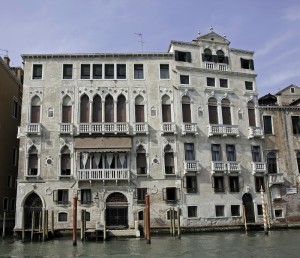 One of the finest examples of architecture in Venice is the Palazzo Barbaro, two adjoined palaces in San Marco, Venice, on the Grand Canal, near the Ponte dell’Accademia.
One of the finest examples of architecture in Venice is the Palazzo Barbaro, two adjoined palaces in San Marco, Venice, on the Grand Canal, near the Ponte dell’Accademia.
One palace is in the Venetian Gothic style, influenced by Byzantine and Moorish architecture, and it dates back to 1425, when it was crafted by acclaimed stonemason Giovanni Bon. The other palace was designed by celebrated architect Antonio Gaspari in 1694, and is in the Baroque style.
The Palazzo was owned until the nineteenth century by the noble Barbaro family(for whom artist Tiepolo painted ‘The Glorification of the Barbaro Family’, now on display at New York’s Metropolitan Museum of Art). When the last of the Barbaro line died, the Palazzo was sold off to a group of investors, who rented it to Daniel Sargent Curtis (relatedto the painter John Singer Sargent). Curtis renovated extensively and made the Palazzo a centre for the arts. In the following years many artists, musicians and writers stayed there:
Claude Monet
Edith Wharton
Henry James
John Singer Sargent
Robert Browning
Whistler
Henry James was particularly taken with the Palazzo – and the desk at which he wrote is still there today. His novel The Wings of the Dove describes ballroom of the Palazzo, which was later used as a location in the film of the book.
So the Palazzo has long been an inspiring location for those with a passion for the arts. To write there today, at a desk overlooking beautiful Venice – what a dream! Or, in fact, a reality, if you’re in the market for a new home? A four-bedroom apartment is currently for sale in the Palazzo, complete with Venetian flooring, a frescoed ceiling and a mosaic-tiled bathroom. This little historical haven will set you back two million euros, however… just a dream then. But a lovely one!
June 16, 2014
Luminara
Recently, I visited a luminarium built by the visionary Architects of Air: an enormous inflatable sculpture one can enter to, as the makers put it, ‘be moved to a sense of wonder at the beauty of light and colour’. It was amazing.
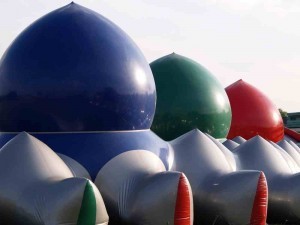 The luminarium got me thinking about the role light plays in creating a mood. Take fireworks. Their bright, colourful, creative light demands that you watch and be moved. I have always been enchanted by fireworks – their brilliance, their magic, their drama. And so I open my novel The Echoes of Love in Venice, during the Carnival, with a firework display whose stirring climax sets the scene for romance:
The luminarium got me thinking about the role light plays in creating a mood. Take fireworks. Their bright, colourful, creative light demands that you watch and be moved. I have always been enchanted by fireworks – their brilliance, their magic, their drama. And so I open my novel The Echoes of Love in Venice, during the Carnival, with a firework display whose stirring climax sets the scene for romance:
The fireworks soared into the air; they broke into raying diamonds of brightness and then floated towards earth, expiring in their downward flight. Other little points of light appeared, followed by tongues of flame rushing up from different places and flowing out large luminous bubbles of silvery-blue and green and sapphire. One after another, the rushing rockets sprang hissing upwards and, towering far above the water, burst with a soft shock into a golden sheaf of fire. They hung uncertain for one moment in the sky, and then came showering down…
There was a pause, before the spectacular finale. Soft stars of colour shot up, soaring into the night. One after another, bouquets of primrose, coral and lilac rose slowly into the sky, blossomed exotically there, flamed, floated, and then vaguely fell, as if faint with an excess of beauty, into the inky water below, which received them and folded them to itself with a kiss.
It is, as Venetia murmurs to herself, ‘A dream being born in the night air.’ Such a passionate, exciting dream to set the heart pounding is at one end of the spectrum. And at the other end is softer, evocative, beautiful light to make lovers melt into each other, such as that in La Lanterna restaurant, to which Paolo takes Venetia for a romantic meal: there, in a beautiful architect-designed space, Venetia is astonished when the light in the dining room changes from calm powder-blue to almost dazzling white: the lights in the ceiling change every five minutes so that the setting and the mood are continuously different. My kind of setting!
Later in The Echoes of Love, Venetia and Paolo stay in Tuscany, where Paolo has built his home. Sadly, it was beyond the scope of the book to take the lovers to all the wonderful annual festivals of the region, but had I chosen one for them to attend as a date, it would have been the Luminara in San Ranieri, Pisa.
The Luminaraforms part of the festival in Pisa to celebrate its patron saint, Ranieri. Ranieriwas a well-to-do merchant of Pisa in the twelfth century who found Christianity and consequently relinquished his wealth and lived as a hermit, preaching God’s word throughout the area. His ashes were placed in the Cappella dell’Incoronata in the cathedral at Pisa, and in the seventeenth century Cosimo III of the Medici decided the saint merited a grander urn. A big celebration was held for the moment of transferring Ranieri’s remains to the plush new urn, and as part of the feast the city was illuminated with candles. Light is significant in honouring Saint Ranieri, because during his conversion to Christianity he had a vision in which an eagle came to him carrying a light, and told him to share that light with people who were in darkness.
Today, the city recreates the architecture of yesteryear – palaces, for example – by affixing wooden frames to modern buildings along the river Arno. Come sunset, thousands of candles in little glass jars dotted along the frames are lit, and their flames glow in the darkness and create dancing, glittering reflections in the waters below. The sight is utterly, breathtakingly beautiful – and so uplifting. To top it all, the evening ends with a firework display, colours emblazoned against the velvety Tuscan sky.
The Luminara takes place on the 16th June. If you’re able to visit, you’ll find it a night to remember always. Please do share your experience of the event in a comment; it’s too far for me to travel there this year, but my readers and I should love to live vicariously!
June 14, 2014
Taking inspiration from classic children’s books
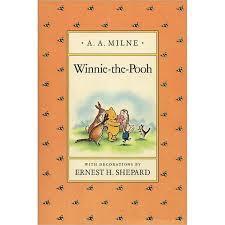 I write fiction for adults, but that doesn’t for a moment mean I don’t appreciate children’s fiction as well. Classic children’s books:
I write fiction for adults, but that doesn’t for a moment mean I don’t appreciate children’s fiction as well. Classic children’s books:
Take me back to my roots: My love for books – for reading and writing – began in early childhood. Such adventures I had between the covers of a book! And it was the book that sparked the dream of writing myself, the dream that has fueled and fulfilled me for as long as I can remember… for as long as I have read books.
Remind me of very happy days with my own children: Just as my parents brought me up to love books, I did my best to instill in my son and daughter a passion for the written word. Such happy times we’ve had reading together. All of the joy and wonder of childhood is captured in the pages of classic literature, and though my children are grown now, all I have to do is pick up their favourite books to remember them as they were.
Are just as good as adult books: CS Lewis wrote: ‘A children’s story that can only be enjoyed by children is not a good children’s story in the slightest.’ The marker of great children’s writing, I think, is that it moves the adult reading it as much as the child.
Have much to teach writers: It is a misconception that writing for children is easier than writing for adults. In a shorter work each word matters all the more, and how challenging it is to tread the line between entertainment and education.
Recently, YouGov carried out a poll to discover the nation’s favourite children’s book. The top ten books were:
Winnie-the-Pooh – AA Milne
Alice’s Adventures in Wonderland – Lewis Carroll
The Very Hungry Caterpillar – Eric Carle
The Hobbit – JRR Tolkien
The Gruffalo – Julia Donaldson
Charlie and the Chocolate Factory – Roald Dahl
Black Beauty – Anna Sewell
Treasure Island – Robert Louis Stevenson
The BFG – Roald Dahl
The Lion, the Witch and the Wardrobe – CS Lewis
That British authors topped the poll isn’t surprising given that this was a UK-based survey, but the age of the books tells an interesting story: only The Gruffalois a relatively recent publication (although still fifteen years old).Winnie the Pooh was first published in 1926; Alice in Wonderland in 1865;The Very Hungry Caterpillar in 1969; The Hobbit in 1937; Charlie and the Chocolate Factory in 1964; Black Beauty in 1877; Treasure Island in 1883; The BFG in 1982; and The Lion, the Witch and the Wardrobe in 1950.
I’m very surprised not to see a Harry Potter book (or seven!) in the list. Perhaps JK Rowling’s blockbusting books need to age a little before we embrace them as a classic. I am delighted, however, to see Winnie-the-Poohis as popular as ever; it’s a book I remember fondly from my own childhood. I think AA Milne’s writing stands the test of time because of its whimsical charm and, above all, the truth that shines through. I will leave you with some of my favourite Winnie-the-Pooh pearls of wisdom…
Don’t underestimate the value of Doing Nothing, of just going along, listening to all the things you can’t hear, and not bothering.
How lucky I am to have something that makes saying goodbye so hard
If you live to be a hundred, I want to live to be a hundred minus one day, so I never have to live without you.
I’m not lost for I know where I am. But however, where I am may be lost.
People say nothing is impossible, but I do nothing every day.
Rivers know this: there is no hurry. We shall get there some day.
Sometimes the smallest things take up the most room in your heart.
Sometimes, if you stand on the bottom rail of a bridge and lean over to watch the river slipping slowly away beneath you, you will suddenly know everything there is to be known.
The things that make me different are the things that make me.
Weeds are flowers, too, once you get to know them.
You can’t stay in your corner of the Forest waiting for others to come to you. You have to go to them sometimes.
June 10, 2014
Five of the best TED talks for writers… and some dating tips from Shakespeare
Are you familiar with TED? It defines itself as ‘a nonprofit devoted to spreading ideas, usually in the form of short, powerful talks’. Its mission statement is as follows:
TED is a global community, welcoming people from every discipline and culture who seek a deeper understanding of the world. We believe passionately in the power of ideas to change attitudes, lives and, ultimately, the world.
Among the 1,700 talks on the TED website one finds many interesting pieces on writing. I’ve pulled together a list of those that most inspired me. If you get a chance, take a look. You may be surprised how much inspiration can come from just a few minutes watching a TED talk…
How to build a fictional world – Kate Messner
The case against ‘good’ and ‘bad’ – Marlee Neel
Mining literature for deeper meanings – Amy E. Harter
What we learned from 5 million books – Erez Lieberman Aiden and Jean-Baptiste Michel
How fiction can change reality – Jessica Wise
And for all my fellow romance readers and writers, I couldn’t resist sharing the following TED talk, in which Anthony John Peters ‘explains why Shakespeare’s coy use of metaphor was so effective – and may just help you get a date today’.

